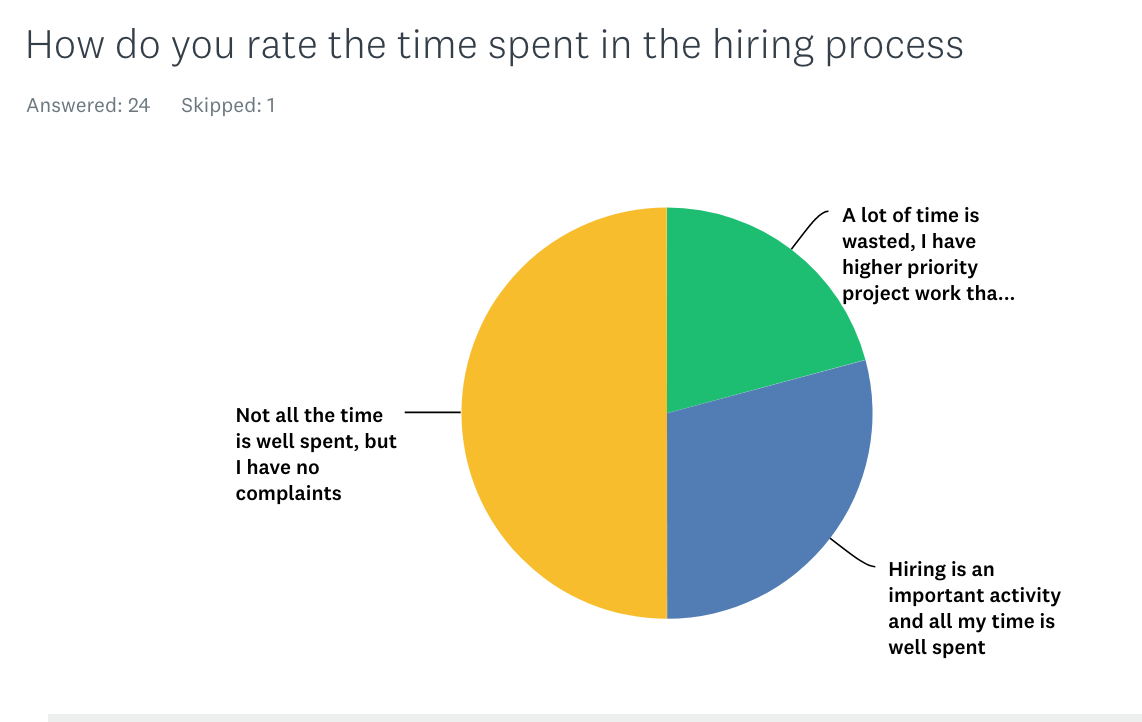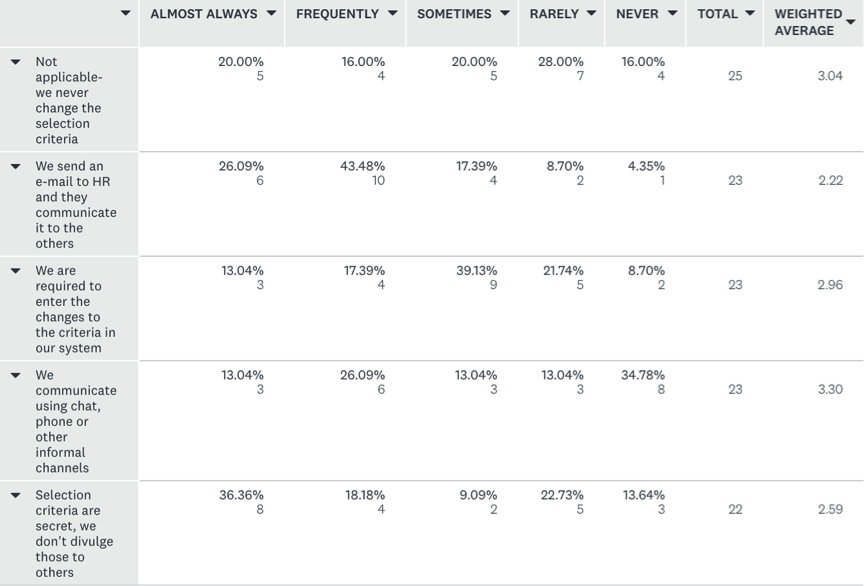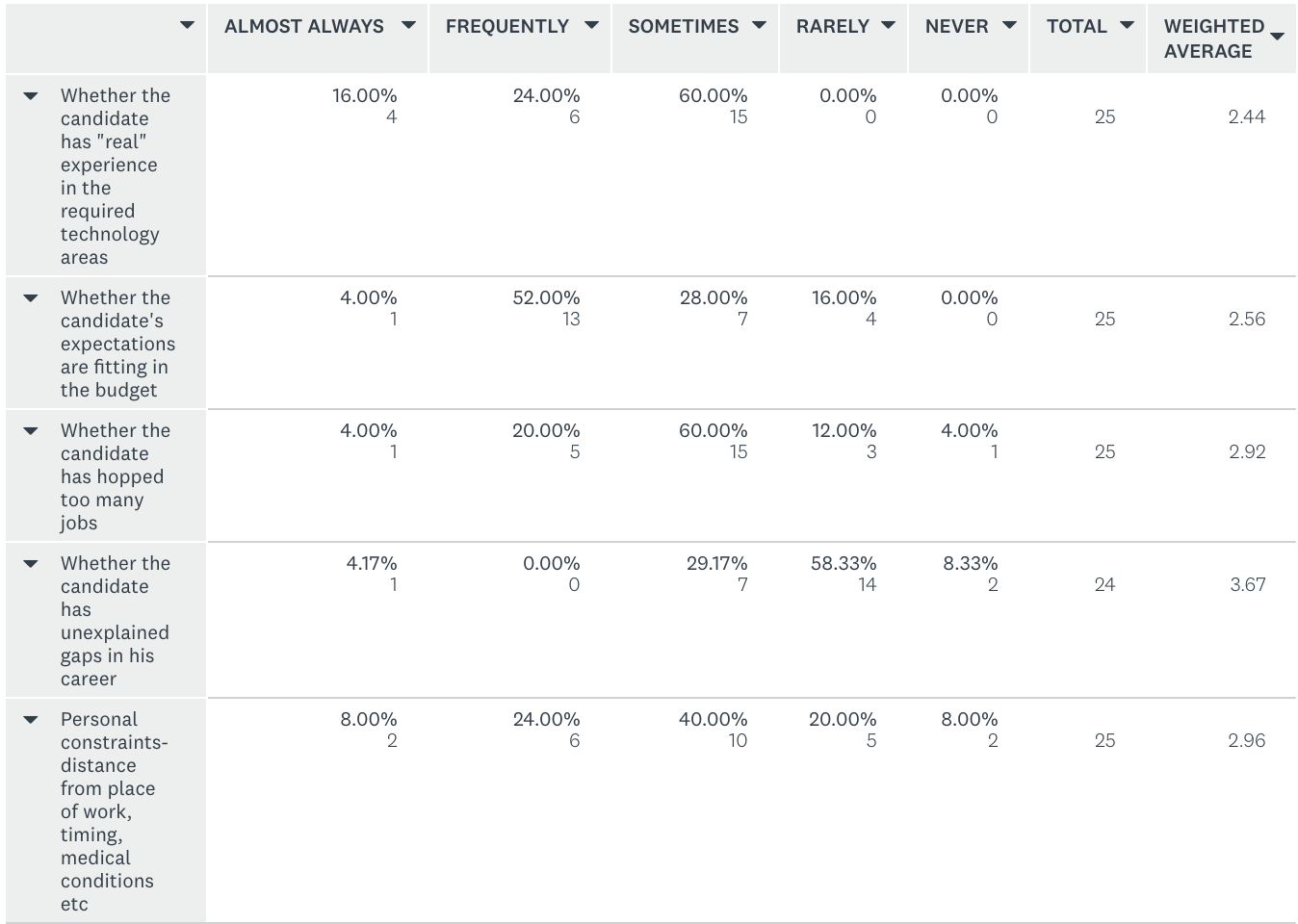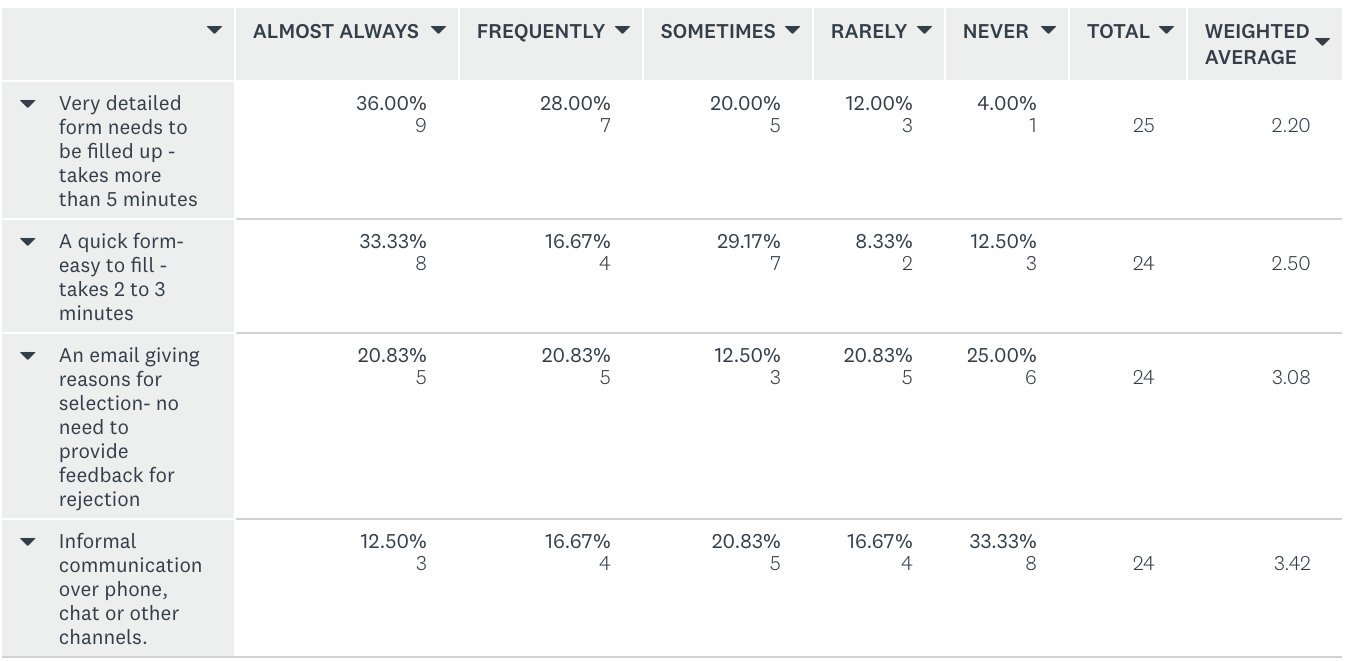In a recent survey conducted by the author, the majority of the interviewers said that the hiring process was wasting a lot of their time. More than 20% felt the need to complain as they could use that time for more important project-related work. About 50% didn’t complain, although they felt that their time was being wasted.

Why do they get involved?
Are the interviewers a willing party to this waste of time? Why do they get involved? A short survey showed that only a few times the hiring manager interviews candidates for a project in which he or she is directly involved. This means he or she is merely an interviewer working for some other hiring manager. The majority of the time the interviewer is roped in by HR or by his superior for his or her expertise. Organizations do want their best experts involved in the selection process. There are a few times when the interviewer gets called in at the last moment because the pre-appointed interviewer is unavailable. Would the interviewer serve as a good proxy for the hiring manager? Would he be as familiar with the job for which the candidate has applied as the hiring manager? One wonders what impact all this has on the quality of hire.
Broken communication starts with the job description
The hiring manager is supposed to write the job description and decide the selection criteria. The interviewers are supposed to select candidates based on the selection criteria and the JD. Very often the JD is not written by the hiring manager. Some hiring managers said that they don’t look at the job description, many said that they believe in a short one-line description of the requirement.
Does everyone know when the Job Description changes?
Given this initial low level of participation in the creation of the JD by the hiring managers, it’s not a wonder that only 20% of the respondents are able to always keep using the initial job description. In the remaining 80% cases, the job description changes. When it does, ideally, the hiring manager should change the selection criteria.
Surprisingly 36% of the respondents didn’t see any need to communicate this to the recruiters and “Almost Always” kept the selection criteria secret! It must be quite frustrating for the recruiters as they are left guessing the real job requirements.
How do you communicate changes to the selection criteria?

Impact of broken communication on the hiring process
We asked the hiring managers whether they noticed some gaps in the way the hiring process identifies and short-lists candidates. They were unequivocal in their feedback – “Sometimes it works, sometimes it doesn’t” (see the table below). There are some obvious facts that the recruiter can check at her level even before sending a resume to the hiring manager. E.g. Whether the candidate has relevant experience? Whether the candidate’s pay expectations are within budget? Has the candidate been a rolling stone?
What are some of the obvious weaknesses in the resumes that are overlooked in the pre-screening stage?

When we talked to some recruiters, we discovered that they were maximizing the number of candidates interviewed. As a result, there is an overall resistance by the recruiters to reject a candidate. They would like to maximize the chances of selection by recommending as many candidates as possible. As a result, the interviewer’s available time is quickly consumed. This has two downsides,
- With so many candidates to be interviewed, multiple interviewers conduct interviews for the same position. This makes objective comparison difficult. Hiring standards become inconsistent and the quality of hiring suffers.
- Interviewers are overworked. Fatigue sets in. The communication between the interviewer and the recruiter becomes tenuous. Recruiters feel that their hard work is not rewarded and the interviewers are frustrated by interviewing unsuitable candidates.
Are we using the interviewers’ feedback to improve the success rate?
We discovered that the same reasons for rejection appeared multiple times in the feedback provided by the interviewers. Does that mean that the recruiters are not using the feedback to improve their selection? In which form is the feedback provided by the interviewers?
We asked this question and please see the responses we received in the table below.
What is the mechanism for providing interview feedback?

It is evident from the table that there’s no commonly followed standard process. Each company follows its own process. The majority (17 out of 25) seem to be using some kind of form. It appears that the primary objective of the form is to put on record the impressions of the interviewer.
We are wondering whether the feedback reaches the recruiter and whether the recruiter is able to change the selection criteria based on the feedback. These two are topics for further research.
Reasons for rejection would reveal what changes we need to make to the selection criteria. Informal conversations with the hiring managers led us to believe that the feedback forms are mainly meant for justifying the selection and not enough importance is given to the reasons for rejection. Also as seen in the table, about 40% of the respondents “frequently” send emails justifying selection, but find no need to justify rejections. Without this information, one wonders if the interviewers’ feedback is used for reducing the number of rejections.
Conclusion
We can conclude that hiring for software engineers is a broken process
- Not every interviewer is “plugged in” to have a good understanding of the job.
- Most interviewers and hiring managers feel that their time is being wasted- even though the majority don’t complain.
- Recruiters are averse to the idea of rejecting candidates. They often overlook easily detectable weaknesses evident in the resumes. They try to maximize the number of interviews. This results in overwork, fatigue, and tenuous relations between the interviewers and the recruiters.
- The established feedback mechanism doesn’t serve the purpose of improving selection rates. More stress is given on the reasons for selection than those for rejection.
- Selection criteria do change but the links carrying the communication back to the recruiters are weak.
We will take a look at the impact of these shortcomings on the organizations and suggest some probable solutions in part 2 of this article.














